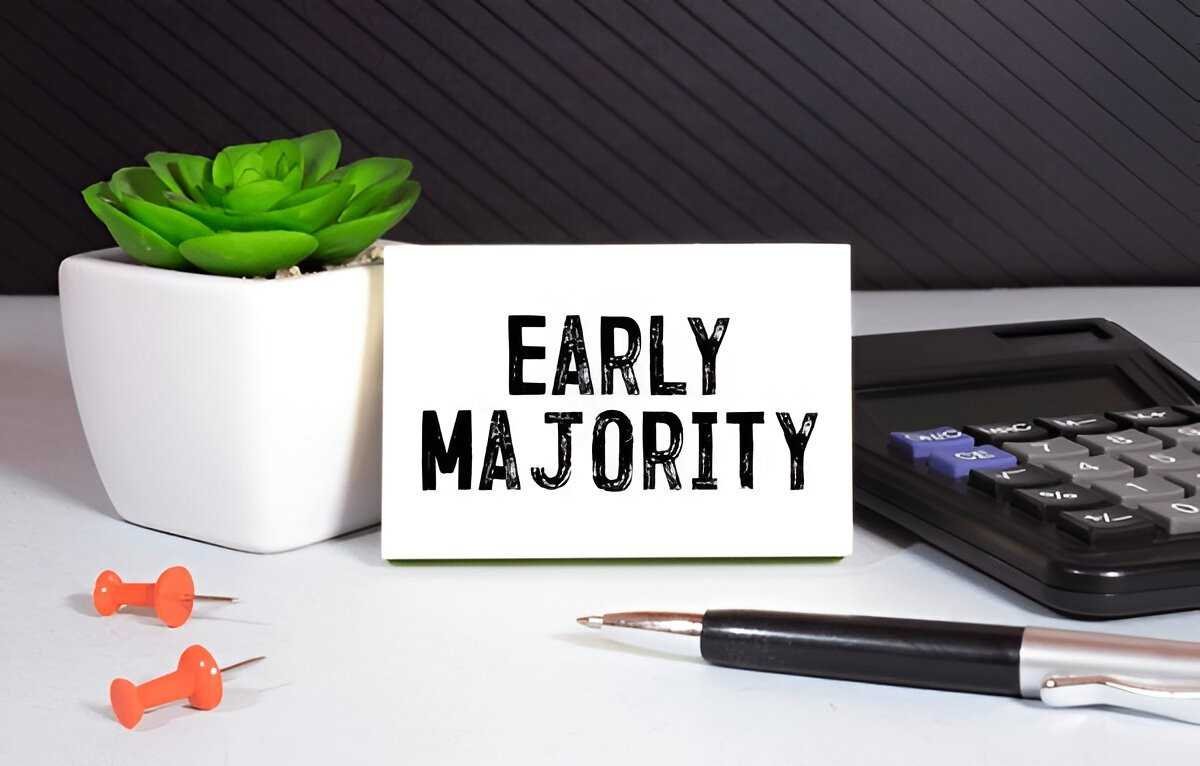Early Majority is a concept in innovation diffusion theory that describes a segment of adopters who are crucial in the acceptance and adoption of new technologies or products. This guide will explain what the Early Majority represents, how it influences market dynamics, its characteristics, and provide examples to illustrate its application in business and consumer behavior.
Table of Contents
What is the Early Majority?
Definition
The Early Majority refers to the group of consumers or businesses who adopt an innovation or new product after it has been proven successful by the Innovators and Early Adopters but before it becomes widely accepted by the general population (the Late Majority and Laggards).
Key Points about the Early Majority
- Adoption Behavior: They represent the largest segment of adopters in the innovation adoption curve, accounting for a significant portion of the market.
- Pragmatism: Early Majority adopters are pragmatic and prefer to adopt innovations that have demonstrated reliability, effectiveness, and widespread use.
- Influence on Market Growth: Their acceptance of an innovation is crucial for its mainstream success and market penetration.
Characteristics of the Early Majority
1. Willingness to Adopt
Early Majority adopters are open to trying new technologies or products but prefer to do so after observing successful implementations by Innovators and Early Adopters.
2. Risk Aversion
They tend to be risk-averse compared to Innovators and Early Adopters, preferring to adopt innovations that have proven track records and lower perceived risks.
3. Market Influence
Their adoption decisions significantly influence market growth and the diffusion of innovations, as their acceptance marks a transition from niche adoption to broader market acceptance.
Example of Early Majority Adoption
Example: Adoption of Smartphones
- Innovators: Tech enthusiasts who adopt new smartphone technologies as soon as they are launched, often seeking the latest features and capabilities.
- Early Adopters: Trendsetters and opinion leaders who adopt smartphones early, influencing others with their experiences and reviews.
- Early Majority: Pragmatic consumers who start adopting smartphones once they become more affordable, reliable, and widely available, following positive feedback and widespread use.
For instance, the adoption of smartphones initially began with Innovators and Early Adopters who were eager to explore new technologies. As smartphones improved in functionality, reliability, and affordability, the Early Majority started adopting them for everyday use, contributing significantly to the rapid growth and market saturation of smartphones globally.
Importance of the Early Majority
1. Market Expansion
The Early Majority’s adoption expands the market size for innovations, driving sales growth and revenue for businesses that invest in new technologies or products.
2. Validation of Innovation
Their adoption serves as a validation of the innovation’s utility, reliability, and market readiness, boosting confidence among later adopters (Late Majority and Laggards).
3. Business Strategy
Understanding the Early Majority’s preferences and adoption behavior is crucial for businesses to tailor marketing strategies, pricing models, and product improvements to attract and retain this critical segment.
Challenges in Reaching the Early Majority
1. Timing
Businesses must accurately time their market entry to coincide with the Early Majority’s readiness to adopt, balancing between early adoption risks and late market entry disadvantages.
2. Communication
Effectively communicating the benefits and advantages of the innovation to the Early Majority requires clear messaging that addresses their concerns and emphasizes proven success stories.
3. Competition
Competing innovations and established products may influence the Early Majority’s adoption decisions, requiring businesses to differentiate their offerings and demonstrate superior value.
Conclusion
Early Majority represents a pivotal segment in innovation adoption theory, bridging the gap between early adopters and mainstream market acceptance. By understanding their characteristics, preferences, and influence on market dynamics, businesses can strategically navigate the adoption curve to achieve sustainable growth and market success. The Early Majority’s pragmatic approach to adopting innovations underscores their importance in driving market expansion, validating new technologies or products, and shaping industry standards. As businesses innovate and introduce new solutions, recognizing and appealing to the Early Majority can significantly enhance adoption rates and accelerate market penetration, ultimately contributing to long-term business success and competitive advantage.





